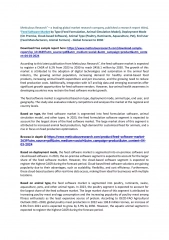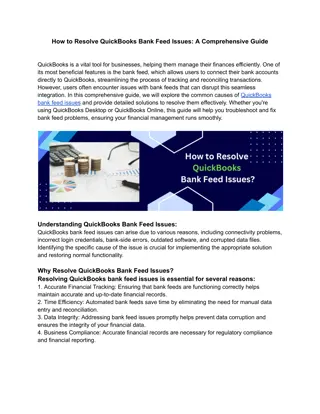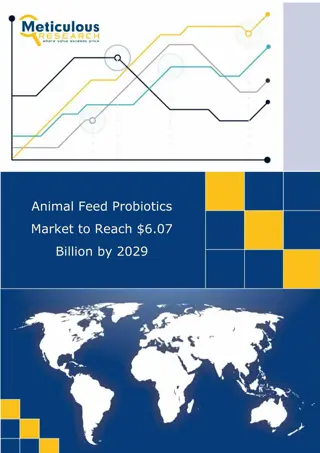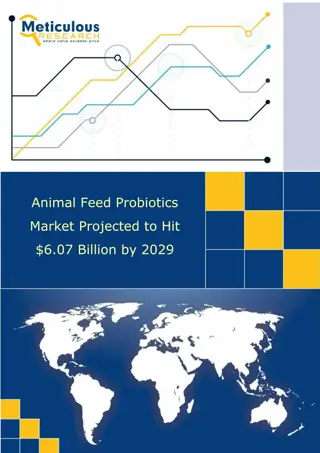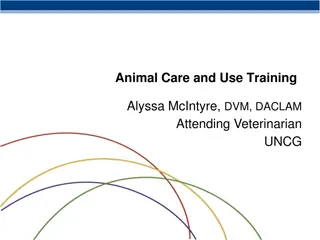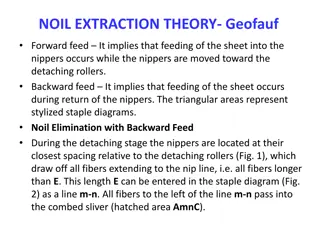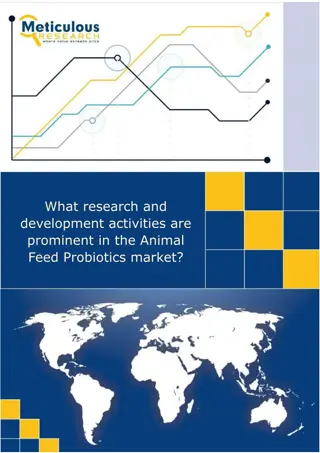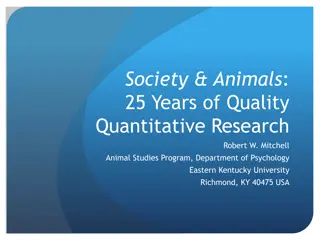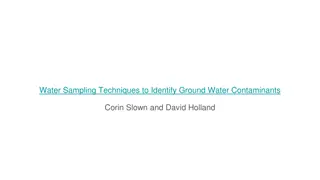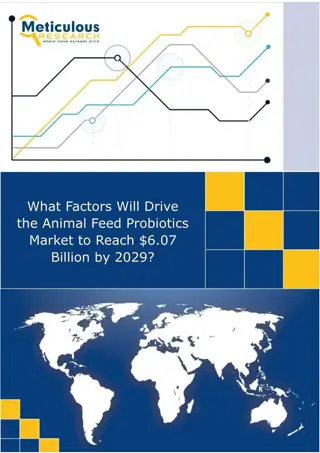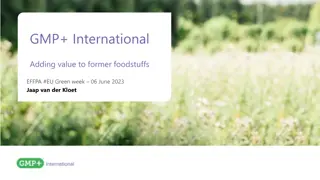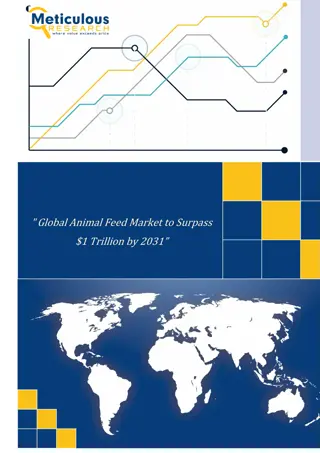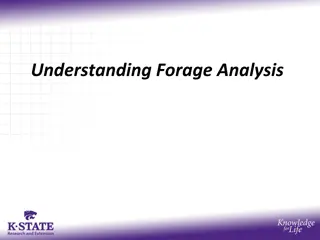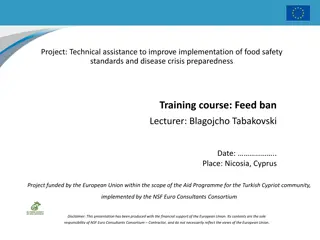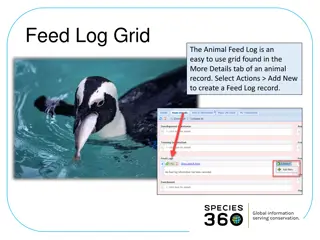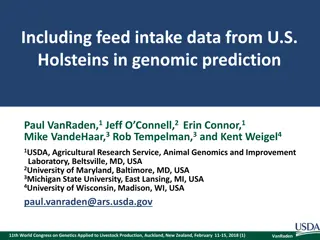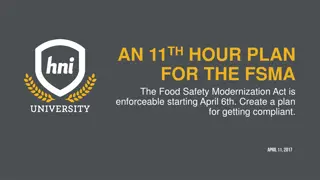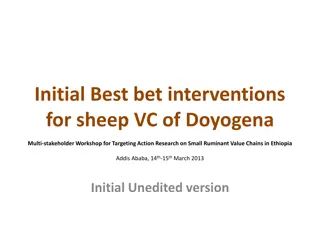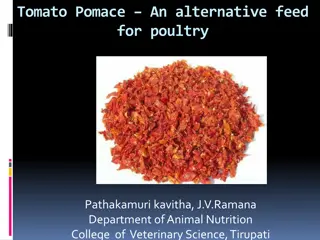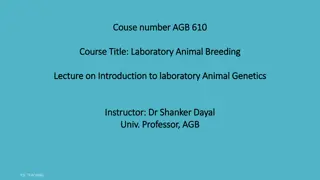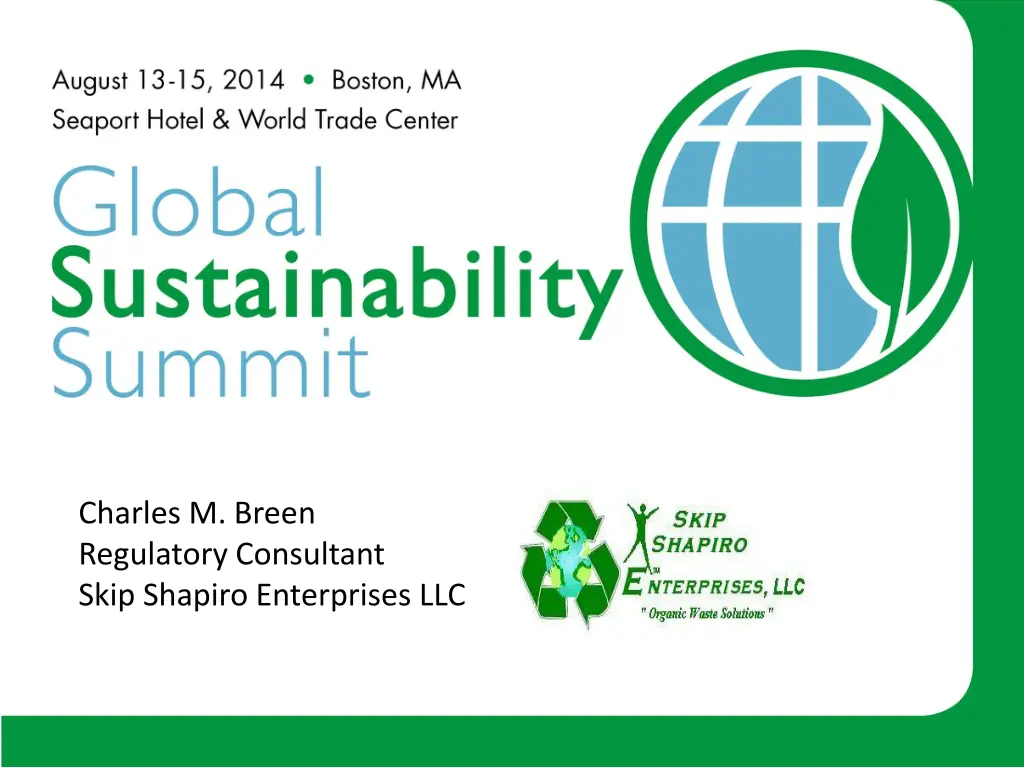
Turning Food Loss into Revenue: Regulatory Compliance and Sustainability
"Explore the opportunity and challenge of repurposing unsalable human food as valuable animal feed to reduce food loss. Learn about regulatory compliance, proposed rules, and the impact on sustainability. Stay informed on key questions and resources to support this initiative."
Download Presentation

Please find below an Image/Link to download the presentation.
The content on the website is provided AS IS for your information and personal use only. It may not be sold, licensed, or shared on other websites without obtaining consent from the author. If you encounter any issues during the download, it is possible that the publisher has removed the file from their server.
You are allowed to download the files provided on this website for personal or commercial use, subject to the condition that they are used lawfully. All files are the property of their respective owners.
The content on the website is provided AS IS for your information and personal use only. It may not be sold, licensed, or shared on other websites without obtaining consent from the author.
E N D
Presentation Transcript
Charles M. Breen Regulatory Consultant Skip Shapiro Enterprises LLC
Re-purpose unsalable human food to valuable animal food
Food Loss between Production and Consumption Approx. 133 billion pounds lost between production and consumption in N. America. 31% of food produced
Opportunity & Challenge Turning food losses into revenue as animal feed Abundant potential supply Good for the environment Good for producer and buyer of feed Regulatory Compliance: Preventive Controls for Animal Food Need for fuller definitions Need for clear guidance Need to know how to comply and stay profitable
Proposed: Current Good Manufacturing Practice and Hazard Analysis and Risk-Based Preventive Controls for Food for Animals
Among the Major Questions: What does reasonably likely to occur mean? How will inspectors be trained to evaluate reasonably likely to occur? When will guidance be available? What assistance will FDA provide? What is the role of AAFCO, State Ag and other State regulators? Do holding and packing apply to bulk grain storage?
FDA Resource Proposed Rules, Guidance, Information http://www.fda.gov/Food/GuidanceRegulation/FSMA/ucm366510.htm
Impact of Proposed Rule for Preventive Controls for Animal Food on Sustainability by Daniel G. McChesney, Ph.D. Director, Office of Surveillance and Compliance CVM/FDA for Global Sustainability Summit August 14th 2014 Boston, MA 9
Summary of Requirements Establish, for the first time, Good Manufacturing Practices for animal food Hazard Analysis and Risk-Based Preventive Controls Each facility would be required to implement a written food safety plan that focuses on preventing hazards in foods
Who is Covered? Facilities that manufacture, process, pack or hold animal food In general, facilities required to register with FDA under sec. 415 of the FD&C Act Applies to domestic and imported food Some exemptions and modified requirements are being proposed
Background: Animal Food Ensuring animal food safety is complex: Animal food is made for a wide variety of species Many animals consume one food as their sole source of nutrition Susceptibility to hazards varies by species and life stage (e.g., different salmonella serotypes are pathogenic to different species, different nutrient toxicities) Animal foods are handled in a wide variety of settings On farm (e.g., pig trough) vs. in home Potential impact on human health Human handling (e.g., kids handling pet treats) Human consumption of animal products (e.g., aflatoxin in dairy cattle feed can pass through to milk)
New Current Good Manufacturing Practices Personnel Plant and grounds Sanitary operations Sanitary facilities and controls Processes and controls Equipment and utensils Warehousing and distribution 13
Hazard Analysis and Risk- Based Preventive Controls
Human vs. Animal Preventive Controls Human food firms can choose to apply human CGMPs and pc to all operations or animal CGMPS and pc to the animal food parts of the operation Enacting legislation allows for difference s in human and animal preventive controls Different definitions of very small business 15
CGMPs: Comments Stakeholders argued the proposed CGMPs were too stringent to be prerequisite requirements for all animal food facilities, given the diversity of the industry Keeping the structure of human food CGMPs Based on comments adjusting the requirements to be less prescriptive while maintaining the baseline protection necessary in all animal food facilities to protect against contamination that would be harmful to public health Based on comments, including a section with specific requirements for holding and distribution
Human food Byproducts A large portion of animal food comes from byproducts of human foods, which include unsalable finished human foods, and certain human food processing waste streams One industry group estimates that nearly 70 percent of waste from human food manufacturers goes into animal food Some human food manufacturers merely hold (and pack) their byproducts for animal food, while others further manufacture and process their co- products to create a more valuable animal food Byproducts can go directly to a farmer (to feed to animals on the farm) or to animal food manufacturers (e.g., feed mills, pet food manufacturers) for further processing. Large dairy farms, cattle feedlots, and swine herds are the most common recipients. Byproducts can be fed directly or may be mixed with other raw materials or ingredients prior to feeding. Safety concerns focused and minimal Chemical and physical
Human food Byproducts: Comments These animal foods would not have any significant hazards that would necessitate preventive controls to protect the safety of the co-products for animal food use. Each human food facility that packs and holds it byproducts for animal food use should not need to perform independent hazard analyses to come to this determination. Requiring these facilities to perform hazard analyses and comply with the related requirements would fail to acknowledge differences in risk, would not minimize, as appropriate, the number of separate standards that apply to separate foods, and would not provide sufficient flexibility to be practicable (each required by FSMA).
Human food Byproducts: Comments Stakeholders expressed concern about over regulation of the byproducts and duplicative requirements. We decided to address all human food byproducts that are merely packed and held, instead of making a separate policy for spent brewers and distillers grains. We will tentatively conclude that preventive controls will not apply to human food facilities that merely pack and hold byproducts for use as animal food that: Are in compliance with applicable human food safety requirements (e.g., human CGMPs and preventive controls for their human food, juice HACCP, etc.), and Follow applicable animal food CGMPs for holding and distribution
Exemptions and Modified Requirements -1 Qualified facilities: Very small businesses (3 definitions being proposed less than $500,000, less than $1millon and less than $2.5 million in total annual sales of animal food OR Animal food sales averaging less than $500,000 per year during the last three years AND Sales to qualified end users must exceed sales to others
Exemptions and Modified Requirements - 2 Storage facilities such as grain elevators and warehouses that only store raw agricultural commodities intended for further distribution or processing Activities within the definition of farm, including farm activities that are covered by the proposed produce rule
More Information Available Web site: http://www.fda.gov/fsma Subscription feature available Send questions to FSMA@fda.hhs.gov
Animal PC vs Human PC Differences Animal PC includes nutrient toxicities as a hazard Animal PC does not include allergens as a hazard Animal PC has two endpoint for judging hazards (animal and human health) Animal PC must address animal food and human food used as animal food

